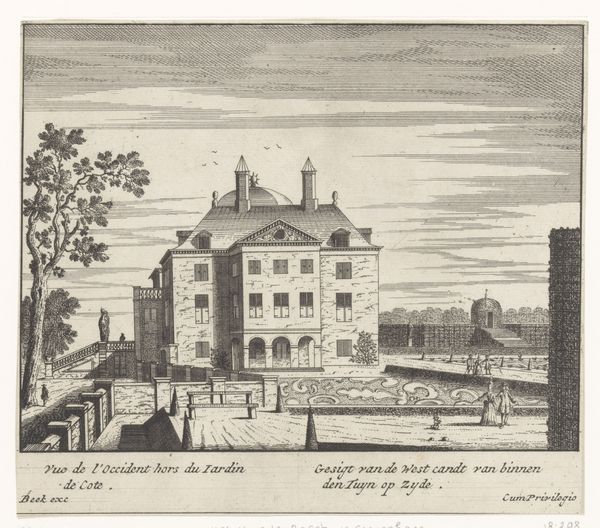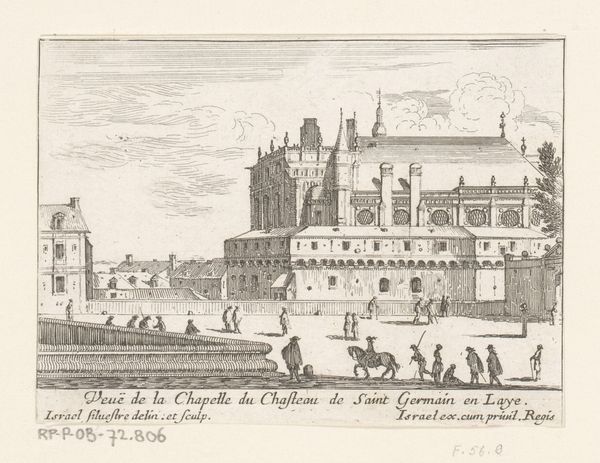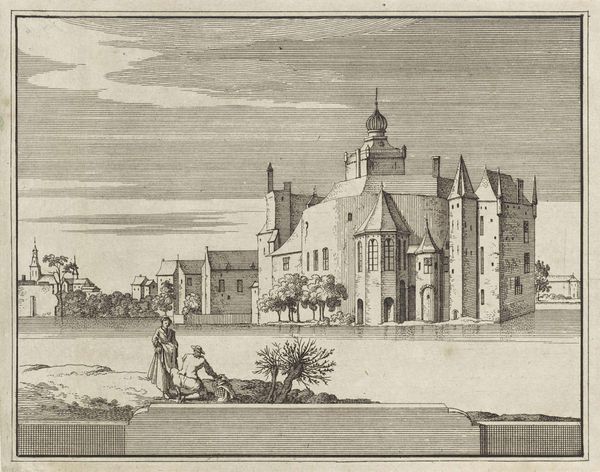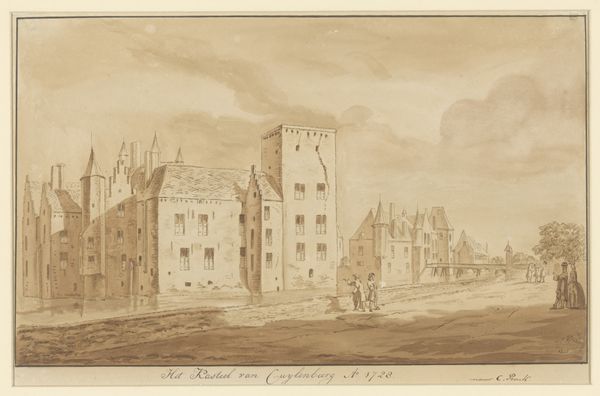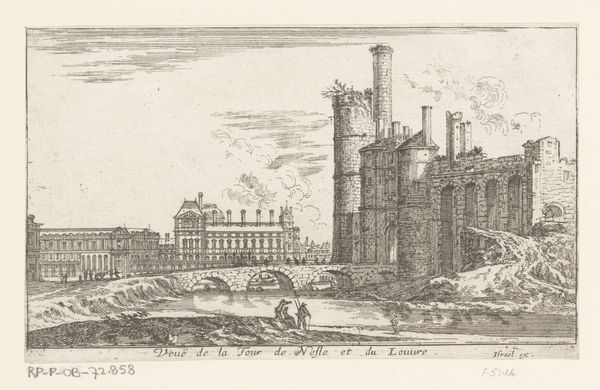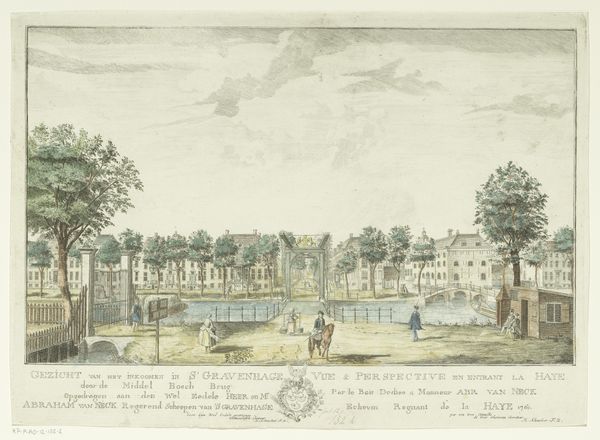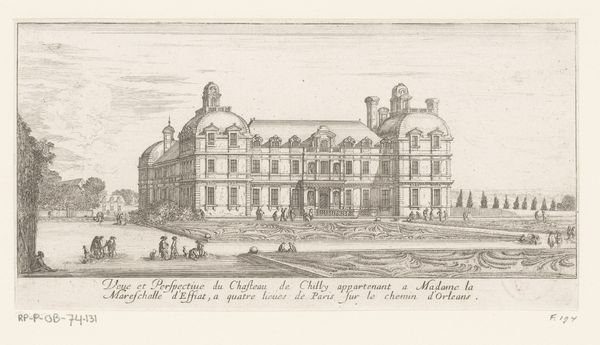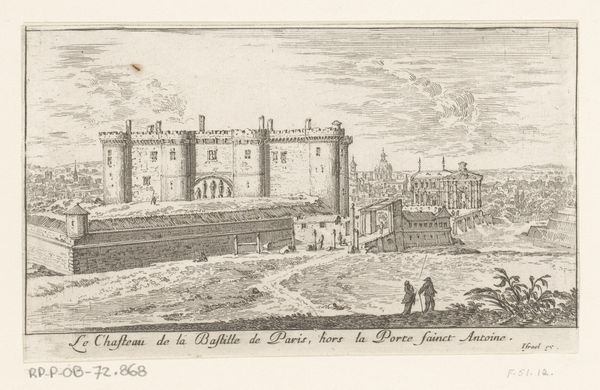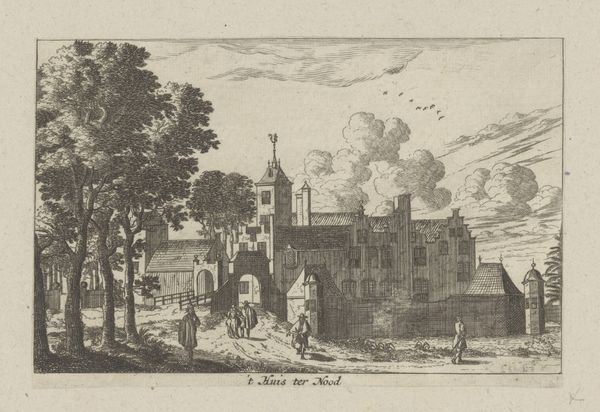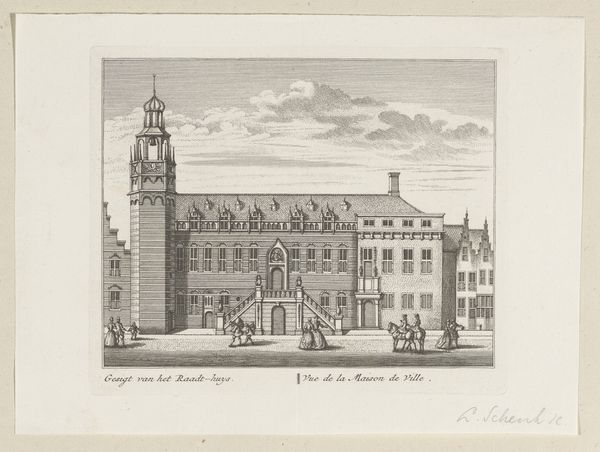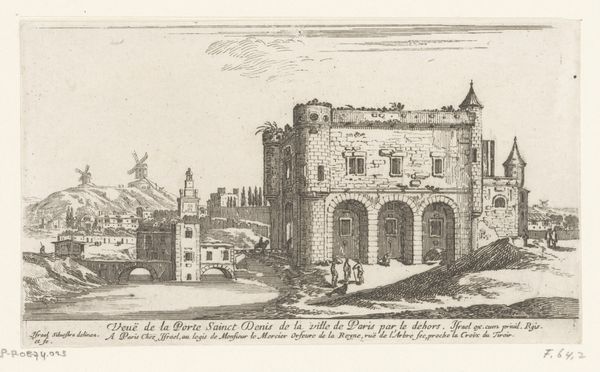
etching
#
baroque
#
etching
#
landscape
#
etching
#
cityscape
Dimensions: height 66 mm, width 116 mm
Copyright: Rijks Museum: Open Domain
This city view was etched by Israel Silvestre in the 17th century, capturing a scene filled with figures that speak volumes about its time. Look at the horseman in the foreground, a motif echoing the equestrian statues of Roman emperors, symbols of power and nobility. Consider the lone wanderer nearby, a figure reminiscent of classical depictions of philosophers or hermits, steeped in contemplation. These symbols aren't isolated; they ripple through art history. The horseman, a recurring motif, carries echoes of ancient triumphs, resurfacing in Renaissance art to glorify rulers. The wanderer, a figure of introspection, mirrors the stoic philosophers of antiquity, embodying wisdom and resilience. The emotional weight of these symbols lies in their psychological impact. The horseman evokes admiration and authority, while the wanderer embodies introspection. These archetypes, deeply embedded in our collective memory, engage us on a subconscious level. They trigger a powerful emotional response rooted in centuries of cultural conditioning. These motifs are not fixed but fluid, evolving with each era. They resurface, transformed, imbued with new meanings, mirroring the cyclical nature of history and the enduring power of the human psyche.
Comments
No comments
Be the first to comment and join the conversation on the ultimate creative platform.
